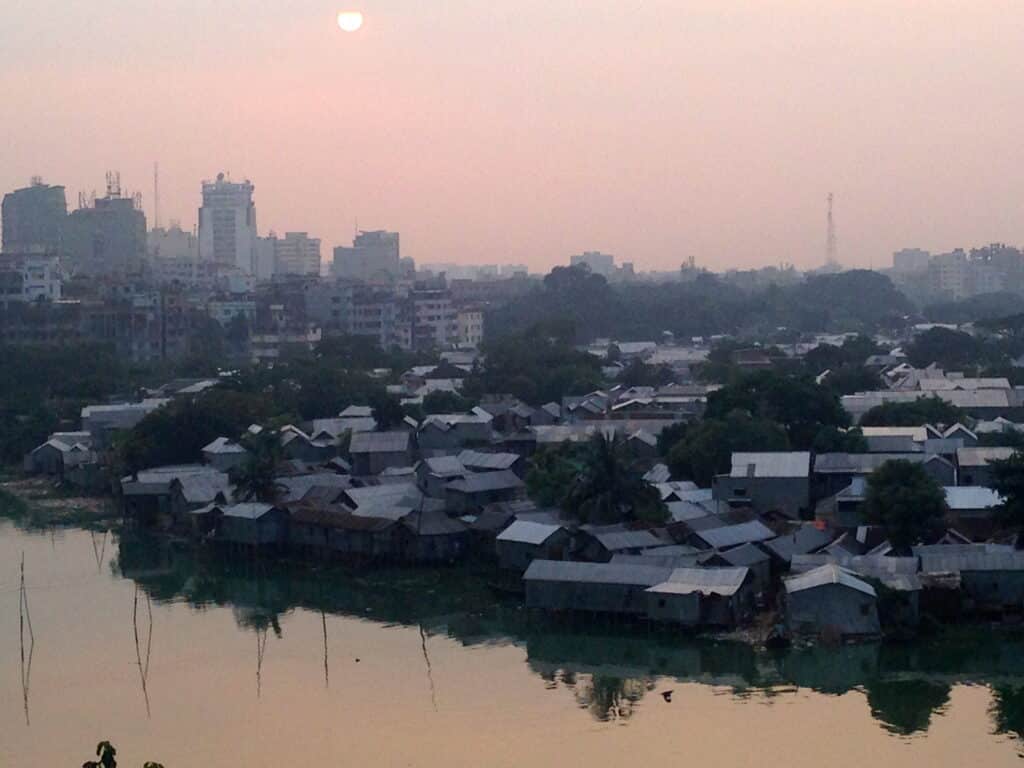A Southern-centered perspective on climate change in global value chains?
20-07-22

This article was first published on 28 January in The Business of Society, bos-cbscsr.dk. It is republished with the permission of the author.
The garment and textile industries account for around 10% of global CO2 emissions, and their fast fashion approach consumes huge amounts of water in the production and processing stages. While the fast fashion model incentivizes the overproduction/consumption of clothes, more sustainable solutions lie in the configuration of value chains towards slow fashion (durable products produced on demand) and the introduction of circular business models. Such a transformation will have consequences for the environment, workers’ conditions, and economic development.
By Peter Lund-Thomsen
This is particularly the case in the light of COVID-19, which led to a temporary disruption in the global garment and textiles value chains as stores closed in Europe and the United States in the spring of 2020. The cancellation and non-payment of garment orders particularly affected suppliers and workers in Bangladesh, leaving hundreds of thousands of workers without jobs and possibly facing destitution.
This is the focus of the new research and capacity-building project on ‘Climate Change and Global Value Chains’ coordinated by the CBS that has recently been funded by Danida. In this research project, we will be working with colleagues from the University of Aalborg and Roskilde University in Denmark as well as BRAC University and the University of Dhaka in Bangladesh. Private sector partners include the Danish Ethical Trading Initiative and Danish Fashion and Textile.
I think that a key challenge in this new project is how we approach ‘climate change’ in the context of global value chains.
“In the Danish debate on climate change, it is almost universally accepted that climate change should be at the top of the political and corporate sustainability agendas. However, both employers and workers in the Bangladeshi garment and textile industries may not perceive climate change mitigation as an immediate priority.“
First, the purchasing practices of major brands sourcing garments from Bangladesh tend to result in downward price pressures, seasonal fluctuations in demand, and shorter lead times while, at the same time, these brands are also imposing ever greater environmental and labour standard requirements on their suppliers (not only in Bangladesh but elsewhere in the global South). Economic value is very unevenly distributed along the textile/garment value chain, with major brands reaping up to ten times higher economic value than suppliers – and even less reaching workers.
“Hence, Bangladeshi suppliers often perceive the environmental and labor requirements of brands as adding to their costs without bringing additional business benefits.“
In this context, suppliers may have very few, if any, incentives to address climate concerns in their value chains, while workers in the industry are trying to survive in a context of economic uncertainty.
In my view, a critical aspect of this new project is therefore that we will not only look at climate change from a Northern-centered perspective; that is, we are not only concerned with how brands and factories engage in the process of decarbonization. We will also zoom in on the importance of climate change adaptation, which I would label a more Southern-centered perspective on climate change in global value chains.
“In fact, Bangladesh is one of the countries most affected by global climate change whose coastal areas and ports are prone to flooding, resulting in disruptions of the garment/textile value chain and economic losses for local manufacturers and workers.“
Moreover, garment factories in greater Dhaka have extremely high lead and CO2 emissions, while many factory workers live in parts of the city that have unhygienic water supplies and must cope with living conditions that affect their health. Hence, integrating climate change and global value chain analysis from a Southern-centered perspective, I would argue, involves looking at the ‘business case’ for climate change adaptation – in other words, we must understand how can climate change adaptation can help in securing the future viability, competitiveness, and jobs in the garment industry and textile industries of Bangladesh.
About the Author
Peter Lund-Thomsen is Professor at the Department of Management, Society and Communication at Copenhagen Business School. His research focuses on sustainable value chains, industrial clusters, and corporate social responsibility with a regional focus on South Asia.
Go back to our stories